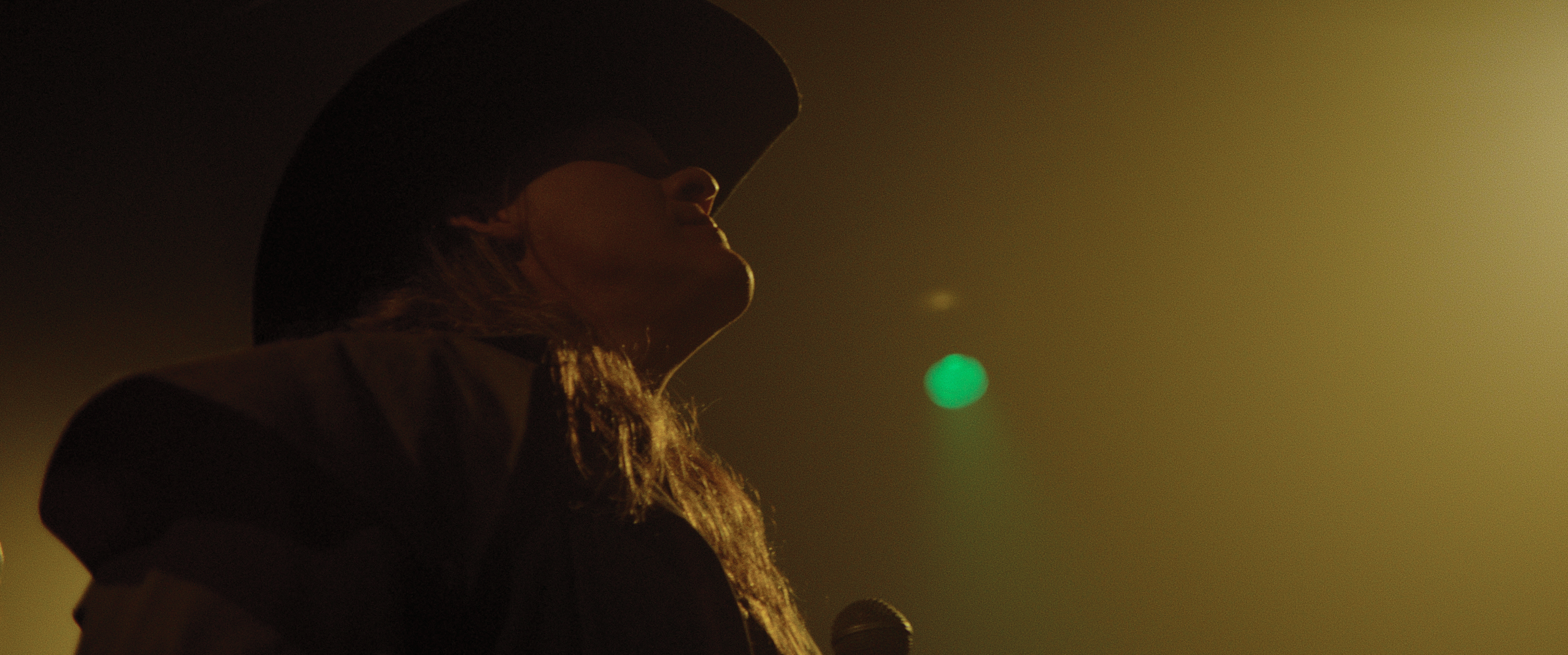DARK MATCH: A Canadian Wrestling Thriller Bound for Cult Status
Adam Manery | Dark Match Film | Dark Match is the newest film from WolfCop director Lowell Dean, and it delivers exactly what fans of genre mashups have come to expect from him. Equal parts horror, wrestling-thriller, and surprisingly sweet romance, the movie maintains Dean’s flair for offbeat storytelling. While it may not be perfect – some moments miss their mark emotionally or tonally – there’s still plenty to love, especially if you’re a wrestling fan or appreciate indie genre films that are willing to take risks. In fact, Dark Match seems poised to gain a passionate following, with repeated viewings almost guaranteed in the years to come.
I recently caught up with Lowell Dean to talk all things Dark Match. He opened up about assembling the cast (including former WWE star Chris Jericho), revealed how a misunderstanding of Dolly Parton’s “Jolene” became a central character’s wrestling name, and shared the excitement of partnering with Edmonton-based studio Dept. 8. Read on for the full interview.
What is Dark Match About? | The Cast of Dark Match
Adam Manery: Dark Match is so many things. It’s a wrestling movie. It’s a horror film. It even has some romance thrown in. When people ask you to describe it, what do you say?
Lowell Dean: It’s tough because it’s a stew of different tones and genres. I’ve taken to calling it a thriller because, as you said, it’s not just a horror movie. There’s humour, there’s heart, and there’s a bit of romance. There are certainly moments of horror, but I’d argue there are as many moments of love and friendship and all those other things. So “thriller” is good—it encompasses the tension.
You have quite the ensemble cast here. From Jonathan Cherry to the former WWE star, Chris Jericho. How did this group come together?
It wasn’t too challenging to pull the ensemble together, but we had to put a lot of thought into it because it’s an interesting mix of actors and wrestlers. We had to put it on a whiteboard and look at the script, asking which characters needed to be actors, which needed to be wrestlers, and which needed to be a bit of both. We started at the top with Ayisha Issa. Miss Behave is our protagonist; she has to be able to handle both. From there, we went role by role. Kate the Great can be Sara Canning—we need a strong actor there. Mean Joe, played by Steven Ogg, would do a bit of both. Characters like Enigma (Mo Adan) can be a wrestler—not just because he doesn’t speak—but because he has a lot of fighting to do in the ring. It was like picking and choosing as we went into battle. One thing we knew was we needed a wrestling superstar there somewhere. We were saying we needed to get someone like Chris Jericho, and thankfully, that “someone” was actually Chris Jericho. When we approached him, he liked the idea of playing a villain, especially a jaded villain who was over professional wrestling. There’s a fun subtext for him in there, and he killed it.
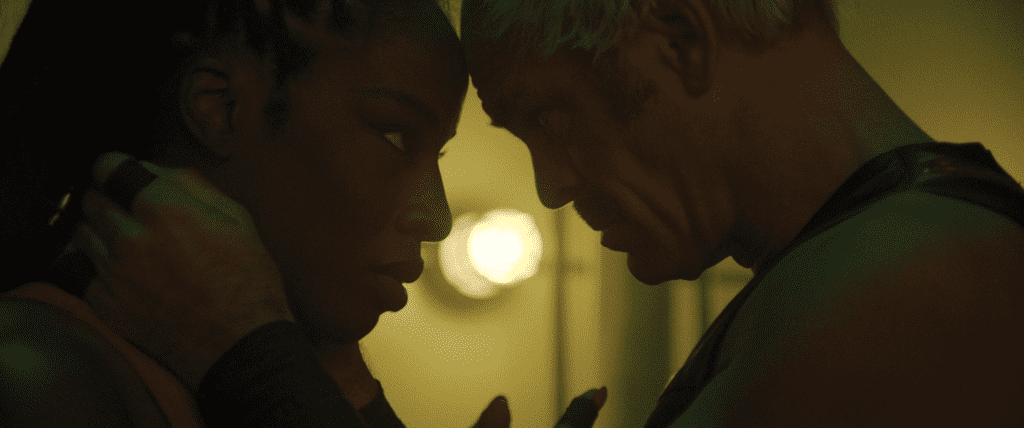
Having a Female Lead in Dark Match | Coming Up With Wrestling Names
Traditionally, wrestling has been dominated by male figures. In Dark Match, though, you have a strong female lead. Was this always the route you were planning to go?
Truthfully, the first draft of the script I wrote had Mean Joe as the protagonist, and Miss Behave was a love interest and part of the ensemble, but she wasn’t the lead. I did a read-through with a bunch of friends, which is what I usually do when I have a first draft—people I trust who can kick the tires and tell me what sucks. The number one thing they said was, “This Miss Behave character is smarter than everyone else and far more interesting. I would rather stay with her than Joe, because Joe, especially in that version of the script, was never really nervous.” He was more like Kurt Russell in Big Trouble in Little China, walking from problem to problem—just “whatever.” It was also more fun story-wise to stay focused on the character who knows something’s wrong, tells everybody something’s wrong, and hears everyone say, “Calm down, you worry too much”… until the “shit” hits the fan. Ultimately, it came out of rewrites, and the movie is only better because of it.
You’ve mentioned Mean Joe Lean and Miss Behave. There are so many brilliant wrestling names in Dark Match. Were there any others that didn’t make the cut?
I can’t think of any names that didn’t make it, but I remember thinking, “These are pretty stupid.” I thought someone would make me change them, but no one made me change a single name. I’m especially happy that I named a character Lazarus Smashley, because what does that even mean? It’s just so stupid. But it’s also apropos of the time, and the place, and the things you see in wrestling. You can be funny out there. Enigma—I changed his name the most, and it was always something mysterious, or ethereal, or questionable. Enigma just felt right because we don’t know what he’s thinking. And Mean Joe Lean is from when I was a kid. I didn’t know the Dolly Parton song was about a woman named Jolene. I thought she was saying a male’s name—“Joe Lean.” That personal embarrassment felt fun to memorialize in a movie. That’s why he’s called Joe Lean. I regret he didn’t have a walkout with that music, but we didn’t have time for it.
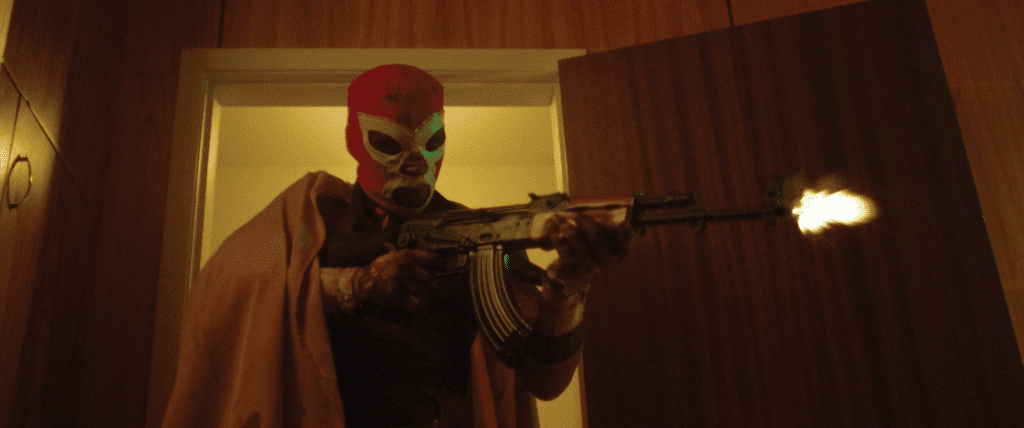
The Dark Match Soundtrack | Being Set in the ’80s
Speaking of music, the soundtrack here jumps out at you almost immediately. It’s rare to have such a stellar tracklist from top to bottom. How did you manage that?
The soundtrack came together pretty organically. It started with our score, which was a collaboration by David Arcus, Terry Benn, and Michelle Osis. They worked as a trio and composed moody, tense music that helped ground the feeling of the film. But we knew because the score was so tense and creepy, we needed to hit it with pops of fun—pops of the ’80s, reinforcing that we’re in that decade (though a lot of our music is from the ’70s too). Luckily, the production company behind this, Dpt. 9, saw the value in getting a cool soundtrack. We have groups like KISS and Trooper, and we have Cameo tracks like “Word Up” at one point. When you make an independent film, rarely does the music in your temp edit stay. Usually, someone comes in and says, “You’re joking if you think you’re going to get that.” I had certain things, like some Guns N’ Roses, that didn’t make it, but overall, this soundtrack was better than what I’d used in my temp edit. I feel so lucky.
Why the ’80s?
I think it was a simpler time. I felt I could explore the messages of this movie a little more without making it feel so heavy-handed. If it were set in the present, people would draw more political comparisons. So the ’80s are removed, plus, there’s the nostalgia factor. For me and my childhood, it was the peak of wrestling, and it was also the height of the “Satanic Panic.” I wasn’t writing the script with 1988 in mind from the start, but as I continued to tweak it and talk to production designers, art departments, and costumes, it just felt like this is an ’80s movie.
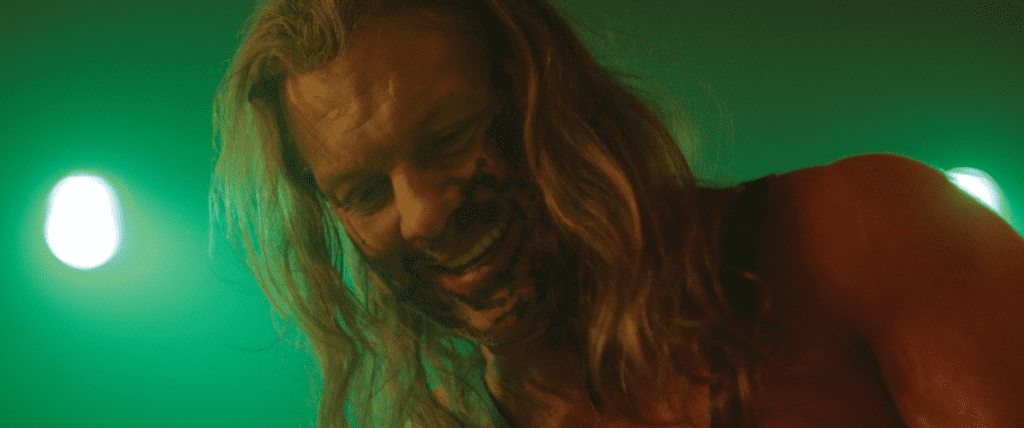
The Cinematography of Dark Match | Dept. 9 Studios
The cinematography here is something else that grabs your attention – particularly the use of colour. What was the collaboration like with your Director of Photography, Karim Hussain?
Karim Hussain is phenomenal—one of the best I’ve ever met, let alone worked with—and he’s a true artist. What I love is he never approached this as a silly wrestling movie. He was like, “This is a serious thriller.” We put intent behind every shot. You mentioned the color palette, and we tried to be thoughtful about that. Little questions like what colour represents good and what color represents evil? We didn’t just decide “red is evil.” We said, “No, actually it’s green. Green is envy, green is money, green is all these twisted things.” Once we had those motifs, we approached every scene asking how we would hint at this. The fun is in repeat viewings because you’ll watch a scene and suddenly realize that character is bathed in a certain color, and you’ll think, “Oh, this character is evil,” even though they’re not doing anything that feels evil. It was fun to work with him, and he brought such a phenomenal team. Yoann Malnati was the Steadicam operator, and I loved working with him. It afforded us such beautiful tracking shots. Shooting the fights was brutal, but we tried to look outside the box. There are a lot of experimental visuals in this film. You’ll see some montages playing with light, colour, and sound. You’ll also see Karim do things like shoot on VHS. I attribute a lot of what makes this film more than what people are expecting to Karim.
It surprised me to hear that Dark Match was shot in Edmonton by a new production company – Dept. 9. How did this relationship form?
Dept. 9 is a production company and studio based out of Edmonton, and they are trying to reinvigorate the Edmonton film scene. This was their first production, and I don’t know how I got involved with them. My producing partner, Mike Peterson, met with them, but I also had other connections there. Rhonda Baker, one of the producers, and Dean Evans, the editor, were working with them. I had a lot of good connections with this company, but as you said, I didn’t know who they were or what they were about. It often happens with these arranged partnerships—when you’re making a movie, you don’t know someone exists, and suddenly the right person walks in and says, “Here’s what we’re looking for.” I got lucky that this new company, which is looking to finance and make original films in Alberta, took a chance on my script. I didn’t think twice. I assumed I’d be shooting it in Regina like I had the WolfCop films, but I packed my bags and went to Alberta and stayed there for a few months. I love Dept. 9, and I hope to work with them again!
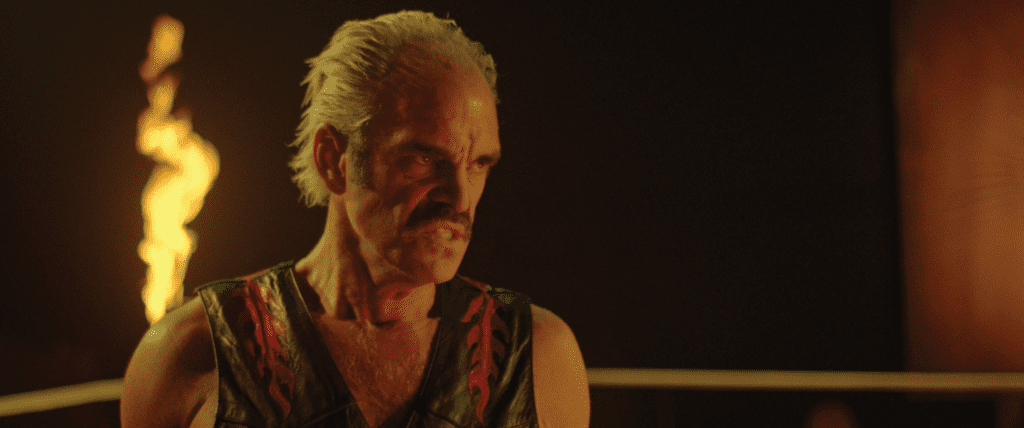
SPOILERS LIE AHEAD.
We need to talk about the ending of the movie. Was it always your intention to summon the creature? How did you settle on its design?
That was always in the script. The intent to end this way was always there, but I was nervous about how people would react because it is a bit of “have your cake and eat it too.” I introduce this crazy thing and then not pay it off. But it was always my desire to end the movie this way, and thankfully no one tried to stop it. The creature’s design was mostly the brainchild of Emersen Ziffle, a makeup FX artist who also did WolfCop. He did double duty, not just overseeing some of the shots but also helping realize the scope of the creature. It’s like The Lord of the Rings. We built a giant puppet that took five people to operate. The wide shot is the puppet, and the close-ups are Emerson in full makeup. The last piece of the puzzle is Akash Sherman, our visual effects artist, who voices the creature. It’s the true marriage of all the people who threw their backs into making the ending so bizarre, and it’s just a very short little tag, but it looks stunning. And weird. I’m curious how people respond when the movie gets out there. Dark Match Film | Adam Manery
Dark Match is currently on a limited theatrical release in Canada. It will be released on Shudder later this year.
Read More:

